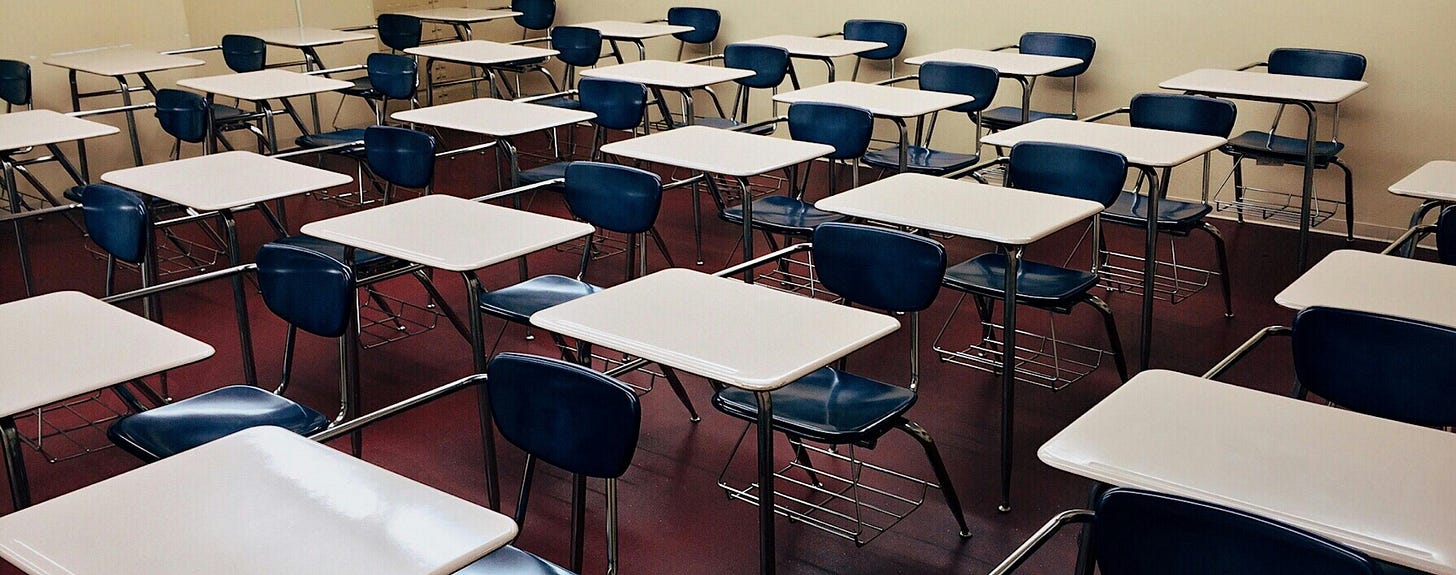Teachers in Southern California
A Reflection on Layoff Rumors, Resilience, and Unwavering Dedication
Teachers in Southern California: A Reflection on Layoff Rumors, Resilience, and Dedication
As we enter 2025, the buzz about potential teacher layoffs is back, creating anxiety in Southern California school districts. In my own district, with 34 schools and 23 elementary schools, the uncertainty is palpable. Teachers are given months' notice that their jobs may be on the line, which is enough to keep anyone up at night. But despite the stress and anxiety, we still show up. Day in and day out, we keep giving our best, even when the odds seem stacked against us.
I recently spoke to a kindergarten teacher—she’s worried about how her already stretched income can keep up with Southern California’s sky-high cost of living. In areas like Irvine, where a one-bedroom apartment can cost between $2,400 and $3,000, first-year teachers are considered low-income. A new teacher in the Santa Ana-Anaheim-Irvine area makes around $66,000—well below the income limits for affordable housing.
Here’s the breakdown:
Extremely Low Income: Up to $33,150
Very Low Income: $33,150 to $55,250
Low Income: $55,250 to $88,400
When she said, “I don’t know what I’ll do if I lose my job,” I could feel the weight of her words. But the next day, she was in her classroom, teaching with the same passion and dedication that makes her beloved by her students. That moment highlighted what sets teachers apart. Despite everything, we keep showing up.
This is not just her story—it’s happening across Southern California, especially in our district. Teachers have faced years of economic strain, from the 2008 recession to the pandemic. Funding cuts, layoffs, and overcrowded classrooms have been ongoing challenges. Now, districts like San Diego Unified face a $176 million deficit for the 2025-2026 school year, and Santa Ana Unified is looking at a $180 million shortfall, with 350 staff positions at risk, including 169 teachers. These numbers aren’t just statistics—they represent real people and real consequences.
Yet, we keep showing up. We give 110% not because it’s easy, but because we believe in what we do and who we do it for—our students.
But here’s the real challenge: it’s not just the layoffs. The issue of declining enrollment adds fuel to the fire. Fewer students enrolling means fewer teachers are hired, leading to larger class sizes. Imagine classrooms that are too empty to fill with teachers, while others are bursting at the seams, with one teacher responsible for more students than is manageable. Our district is even considering bringing back combination classrooms next year. It’s a lose-lose situation for everyone, but especially for the students.
California Education Code (EC) sets limits on class sizes:
Kindergarten—average class size can’t exceed 31 students, with a maximum of 33 students in a class.
But due to budget cuts and teacher shortages, districts are pushing these limits, and it’s the students and teachers who suffer. This issue didn’t appear overnight. Classroom sizes in California, especially in kindergarten, have steadily increased for the last 20 years, and this growth has paralleled the state’s financial struggles.
Back in the 1990s, California tackled overcrowded classrooms with the Class Size Reduction (CSR) Program, which lowered kindergarten through third-grade classes to a maximum of 20 students. This initiative worked and improved education quality. But when the 2008 budget crisis hit, CSR was suspended, and larger class sizes returned. In recent years, many districts have relaxed class size limits, and some have even surpassed the mandated limits. Larger classes, fewer teachers, and rising expectations have become the new norm.
So why not revisit the CSR program now? Why, after two decades of rising class sizes, are we still allowing classrooms to grow while cutting teacher positions? The CSR program worked in the past, so why not bring it back? We need smaller class sizes for all grade levels, especially in early education where it’s critical to set a strong foundation.
Here’s the truth: classroom sizes are unmanageable, and teachers are overwhelmed. Imagine a kindergarten class with 33 children, each with unique developmental needs and varying reading levels, all while teachers have fewer resources to meet those needs. It’s simply not sustainable. We can’t keep asking educators to do more with less. It’s time for change—and it’s time to invest in teachers and students again.
Let’s start a conversation that doesn’t just focus on the challenges we face but also the solutions that have worked in the past and can work again. We need smaller class sizes, more teachers, and policies that support our workforce so that our students get the education they deserve. The CSR program provides a proven solution—let’s adapt it to today’s reality.
It’s time to stop letting budget cuts dictate our students' futures. We have the power to change this, but it will take all of us—teachers, parents, and lawmakers—working together to secure a brighter, more sustainable future for California’s classrooms.
Three Key Solutions:
Reinstate Class Size Reduction: Bring back the CSR program from the 1990s to reduce class sizes, especially in kindergarten through third grade, where smaller classes have proven to improve learning outcomes.
Increase Teacher Hiring: Address teacher shortages by investing in more hires to meet growing demand and prevent burnout among current teachers.
Allocate Funds to Education: Prioritize education funding to ensure schools have the resources needed to provide quality education, including manageable class sizes and teacher support.
Let’s start the dialogue—it's time for change.


